You don't have javascript enabled!
While you may still browse the report, maps will not load.
Please upgrade your browser and/or enable javascript.
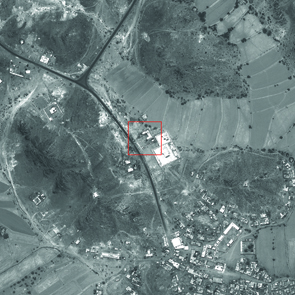
Before- (May 5, 2011) satellite images of a strike in Al Wade’a. Source: Digital Globe, Inc. Without specific coordinates for this strike, Forensic Architecture scoured a large portion of the Al Wade’a district using Google Earth, identifying several potential sites prior to acquiring before-and-after satellite images. According to munitions expert Chris Cobb-Smith, whom we commissioned to interpret the “after” image clearly indicating the building in ruins, the two lighter spots in the dusty courtyard are likely to be the result of an airburst bomb. These bombs detonate a few meters above the surface to maximize blast force. He noted that the level of destruction was probably due to bombs of at least 500 pounds each.
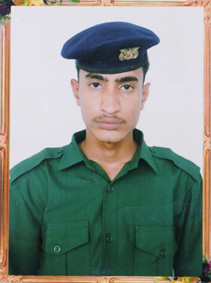
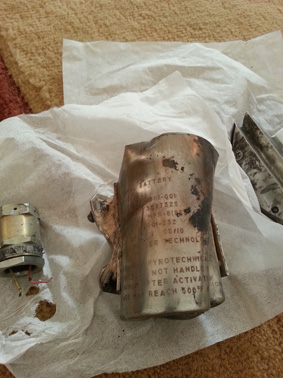
Fragments of a missile alleged to have been used in the strike in Khashamir, Hadramout.Source: Alkarama

A portrait purporting to show one of the victims of the alleged drone strike. The Arabic text reads: "The Martyr / Nasser Salah Nasser Died in "Khatt Al-Saboul" from an air strike on Sunday 2012/9/2". Source: Alkarama
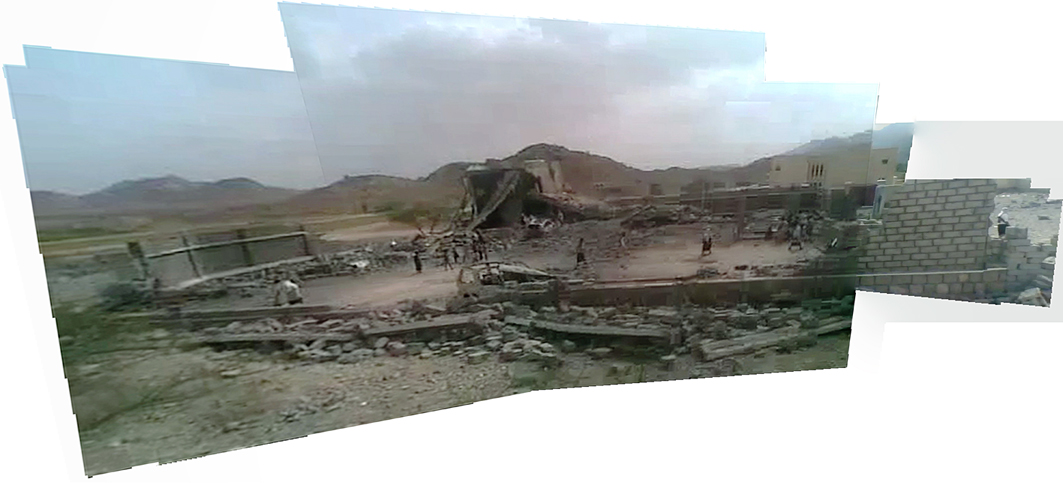
Al Wade’a, Yemen. By extracting stills from the footage of the strike site broadcast by Aden News Agency TV, Forensic Architecture created a panoramic image of the building hit in the strike. This helped us both to identify the location of the strike on a satellite image and (with the help of Chris Cobb-Smith) to identify the two lighter circles in front of the ruin that indicate the place above which the airburst munitions detonated.

A portrait purporting to show one of the victims of the alleged drone strike. The Arabic text names him as "Abed el Ghani Ahmad Mabkhou Al-Sabouli". Source: Alkarama

A portrait of one of the victims of the alleged drone strike on September 2, 2012. Source: Alkarama

A portrait purporting to show one of the victims of the alleged drone strike. The Arabic text reads: The Martyr/ Mabrouk Mokbel Ali Saleh Al-Dakari. Martyred during an air strike in "Khatt Al-Saboul"on Sunday 2012/9/2".

A portrait purporting to show one of the victims of the alleged drone strike. The Arabic text names him as "Ismail Mabkhout Al-Sabouli". Source: Alkarama

A portrait purporting to show one of the victims of the alleged drone strike. The Arabic text names him as "Saddam Hussein Mohammad Al-Sabouli". Source: Alkarama
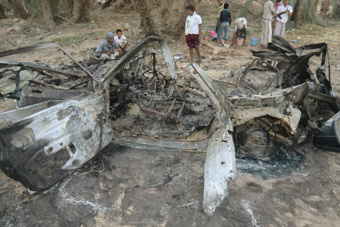
A photo that purports to show the remains of the car targeted in the missile strike in the village of Khashamir. Source: Reprieve

Fragments of a missile alleged to have been used in the strike in Khashamir, Hadramout. Source: Alkarama
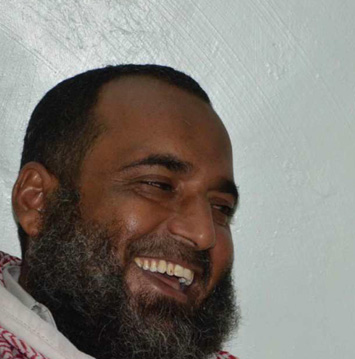
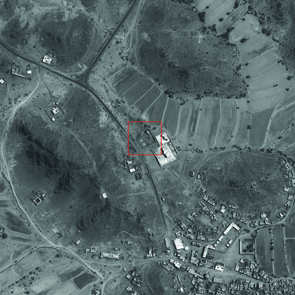
After (July 21, 2011) satellite images of a strike in Al Wade’a. Source: Digital Globe, Inc. Without specific coordinates for this strike, Forensic Architecture scoured a large portion of the Al Wade’a district using Google Earth, identifying several potential sites prior to acquiring before-and-after satellite images. According to munitions expert Chris Cobb-Smith, whom we commissioned to interpret the “after” image clearly indicating the building in ruins, the two lighter spots in the dusty courtyard are likely to be the result of an airburst bomb. These bombs detonate a few meters above the surface to maximize blast force. He noted that the level of destruction was probably due to bombs of at least 500 pounds each.